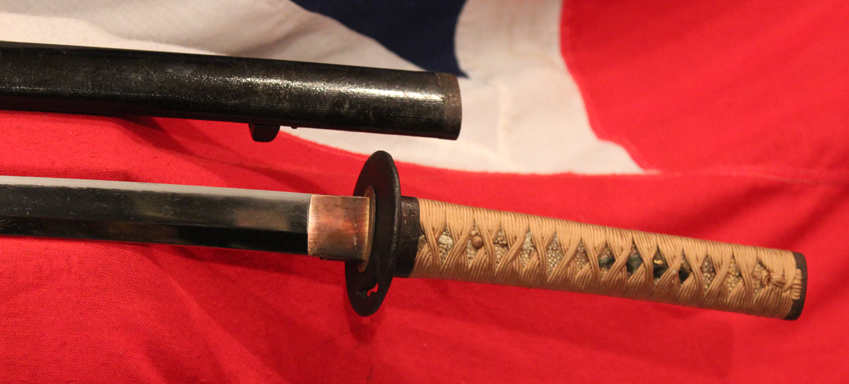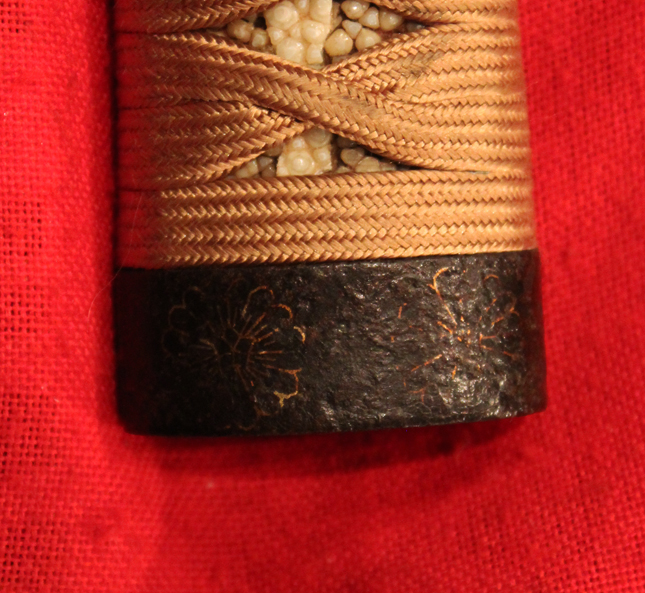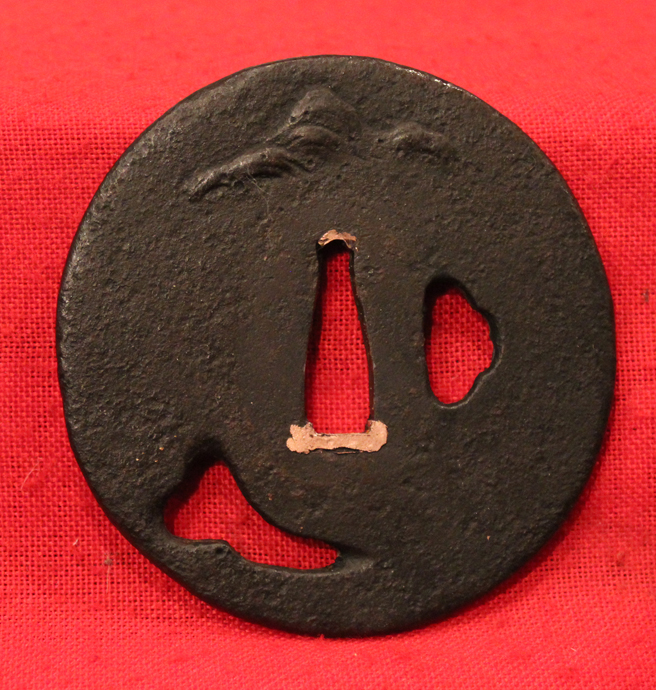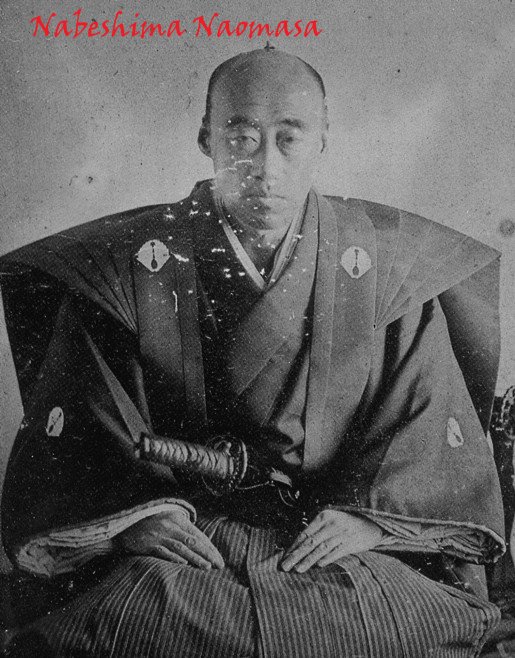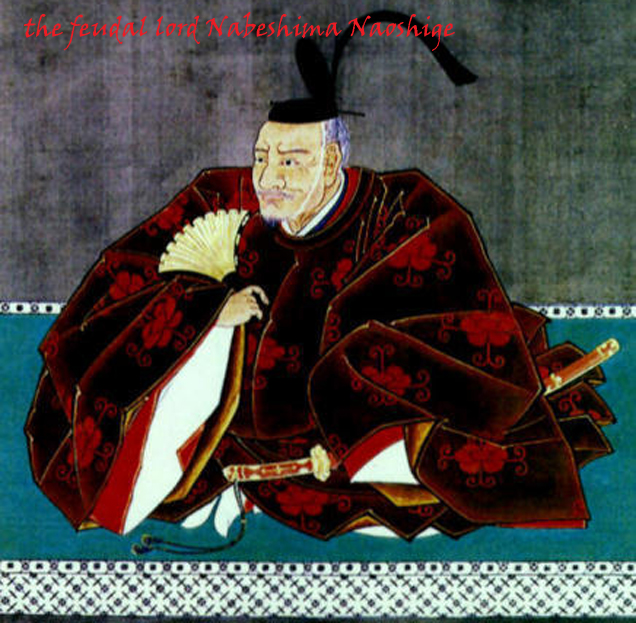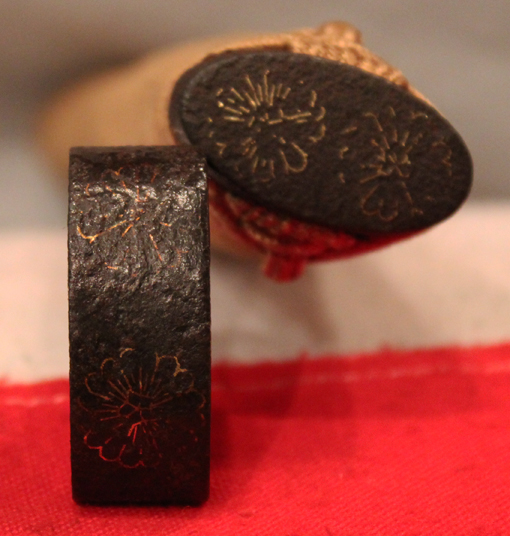An Amazing Samurai Sword Katana. Signed, Hizen kuni Dewa no kami Yukihiro Circa 1670 Made For the Nabeshima Clan
A fabulous, signed, samurai katana of the Nabeshima clan lords.
All original Edo fittings to compliment the blade. A sword made circa 1670, with fine iron Higo school mounts with pure gold inlaid Imperial chrysanthemum mon to the fushi and kashira. Round iron Edo tsuba. Original Edo period urushi lacquer saya.
Yukihiro was a swordsmith of Hizen province, and as we believe this sword was made by him around 1670, he was making his swords for the Nebeshima at this time, so we believe it is very likely this was created intially for one of that family clan.
He was the Second son of Hashimoto Yoshinobu.
Yukihiro acquired the title of Dewa Daijo in 1648 and was ranked up to Dewa (No) Kami in 1663.
He travelled to Nagasaki to learn under Hisatsugu and Tanenaga who were highly informed about western steels brought to Japan by the Dutch. Yukihiro also studied Bizen-den style under the swordsmith that belonged to the Ishido School and sometimes added the character Ichi to his signature. Later he became a retained swordsmith of the Nabeshima family and lived in Nagase town. He passed away in 1683, aged 66. The clan controlled Saga Domain from the late Sengoku period through the Edo period.
The Nabeshima clan was a cadet branch of the Shoni clan and was descended from the Fujiwara clan. In the late 12th century, Fujiwara no Sukeyori, a descendant of Fujiwara no Hidesato in the 9th generation, received the title of Dazai Shoni (equivalent to that of vice-governor of the military government of Kyushu) from Shogun Minamoto no Yoritomo, and the title became the family name.
The clan played an important role in the region as early as the Muromachi period, when it helped suppress opposition to the Ashikaga shogunate's control of Kyushu. It did not take the name Nabeshima, however, until the late 15th century, when Shoni Shigenao established himself at Nabeshima in Hizen province (today part of Saga City, Saga prefecture). Later, in the Sengoku period (1467-1603), the Nabeshima were one of a number of clans which clashed over the island. The Nabeshima sided with the Ryuzoji clan against the Otomo clan, though this ultimately ended in failure and the death of Ryuzoji Takanobu at the 1584 battle of Okita Nawate. Several years later, however, the Nabeshima recovered power and prominence by aiding Toyotomi Hideyoshi in his 1587 invasion of Kyushu; Nabeshima Naoshige was granted the region of Saga as his fief, as a reward for his efforts. Naoshige also contributed to Hideyoshi's invasions of Korea in the 1590s.
The clan initially aided Ishida Mitsunari against Tokugawa Ieyasu in the Sekigahara Campaign in 1600. However, they switched sides to support the Tokugawa, who were ultimately victorious, before the campaign had ended, battling and occupying the forces of Tachibana Muneshige, who was thus prevented from contributing directly to the battle of Sekigahara. Though regarded as tozama daimyo ("outside" lords), and assigned particularly heavy corvee duties, the Nabeshima were allowed to keep their territory in Saga, and in fact had their kokudaka increased. The clan's forces served the new Tokugawa shogunate loyally in the years which followed; they remained in Kyushu during the 1615 Osaka Campaign as a check against a possible rebellion or uprising by the Shimazu clan, and aided in the suppression of the Shimabara Rebellion of 1637. In recognition of their service, members of the clan were granted the prestigious family honorific name of Matsudaira in 1648, Matsudaira being the original Tokugawa family name, the ruling Shogun of Japan for almost 300 years. 29.75 inch blade from tsuba to tip. Overall 39 inches long in saya. No p/x or layaway available on discounted items.
Code: 19598
7250.00 GBP




